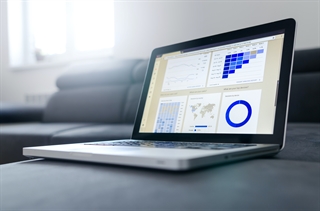What to Consider When Designing an IoT Solution
Part 4: Telematics Data Aggregation, Visualization and Storage
 The data viewed and used by Local users is also very valuable to individuals that are not within close proximity to the machine. This is where Cloud and Web interfaces come into play. As data is collected and transmitted from the machine it then must be aggregated, visualized and stored in a way that provides value to the viewer. Value could include monitoring the machines current condition for uptime and productivity or analyzing the past years operating metrics to build the next generation machine.
The data viewed and used by Local users is also very valuable to individuals that are not within close proximity to the machine. This is where Cloud and Web interfaces come into play. As data is collected and transmitted from the machine it then must be aggregated, visualized and stored in a way that provides value to the viewer. Value could include monitoring the machines current condition for uptime and productivity or analyzing the past years operating metrics to build the next generation machine.
Regardless of the use case, a Telematics solution will utilize Cloud services like AWS, Azure or Google Cloud to provide the data aggregation and storage for your solution. In addition to Cloud services your solution will require web services or a web interface, where data can be visualized in the form of values, charts, images or graphs that are displayed in accordance to the workflow being provided. This workflow is the key to a successful solution and is directly aligned with why the end-user needs to see the data. While there are a number of prebuilt solutions available in the market, they don’t meet the needs of everyone, and many OEMs look to develop their own web interfaces from the ground up. These software and web development efforts are not for the light of heart, nor do they end once deployed as there will be an ever-evolving need for management and updating.
If all of these aspects of Telematics don’t seem challenging enough, anyone deploying a solution has to future proof it to the best of their ability. Factors like scalability, flexibility, regulatory laws, and security should be thoroughly addressed during the design and implementation stages as you should not have to rebuild your solution every couple of years. Rather, you should be continuously building upon your solution and evolving it. This will provide a consistent experience for your end-users and will decrease solution costs in the long run.
Every OEM is looking to differentiate their machines from the competition, and most are looking for Telematics to achieve that competitive difference. The question then is, “Should I buy a prebuilt solution, customize a solution that closely meets my needs or should I build my own solution from scratch?” Understanding these fundamental Telematics elements (collection, transmission, aggregation, visualization, and storage) is essential to answering the buy, customize, build question. Next, we need to answer the question, “What value do I want to provide to my customers?”




Related Blog Posts:
Part 1: What is Telematics and Why is it Important?
Part 2: Telematics and Data Collection
Part 3: Telematics and Data Transmission
More on Telematics